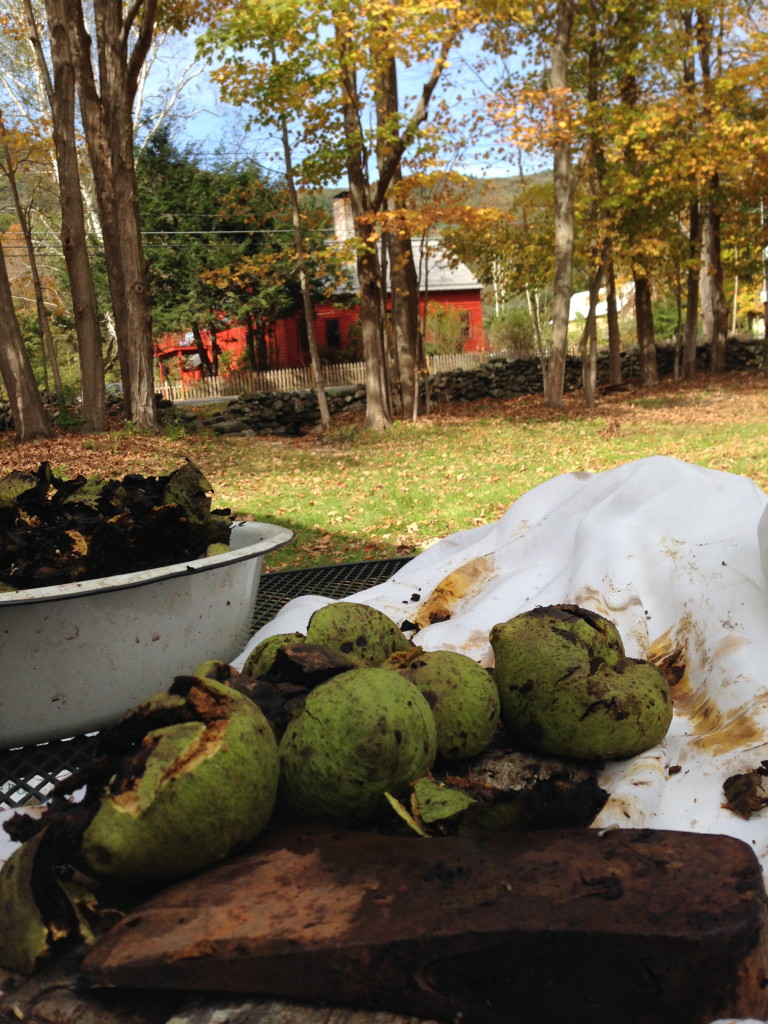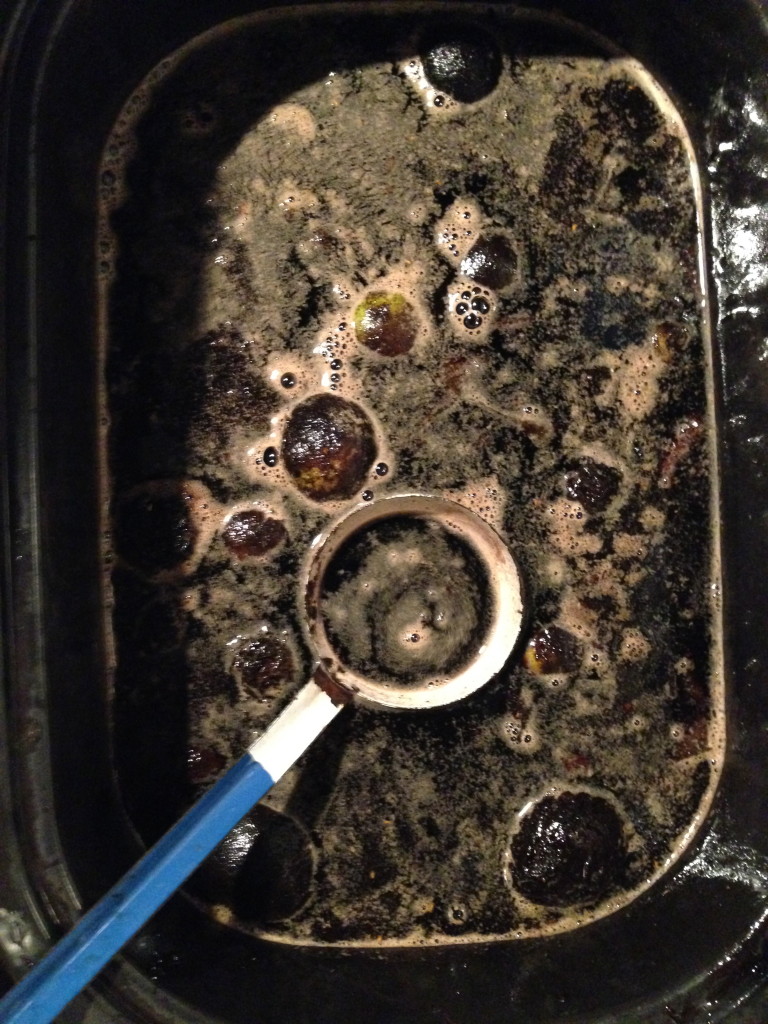black walnut wednesday
When I was twelve my father moved us from the suburbs of Washington, DC to a very small town, Delaplane, VA. Our house was situated at the end of a two-mile curvy dirt road. We came to know every twist and turn and every tree that lined that road. In the fall, strange smelling nuts littered the road right next to the McCarty’s hay barn. My mother tried to explain that these black walnuts had many purposes—both used for dyeing and for eating–but it did not interest me then. The nuts would mysteriously disappear, and we learned that Mrs. Williams, wise to all things natural, would gather them and use them for cooking. They tasted especially divine in her homemade fudge—a yearly Christmas gift along with her dandelion wine. Perhaps Mrs. Williams had a dye pot at the ready as well.

We have yet to locate any black walnuts or butternut trees on our property. Now I scavenge for them in the fall, carrying pails and bags in my car to gather them. On the pavement, one can easily see the long dark streaks that the squashed hulls make, like a natural drawing, and sure enough the side of the road is littered with the green hulls.

Black walnuts (Juglans nigra) are “one of the oldest home dyes” according to the 1973 Brooklyn Botanic Garden publication, Dye Plants and Dyeing—a handbook. “The nuts are collected while the hulls are still green. Remove the hulls (see directions for butternut hulls), cover them with water, and store away from the light until ready to use.” When dyeing with black walnuts, one does not need to use a mordant (French for ‘to bite’), an addition to the dyebath that allows the color to bind/bite the fiber.

Yesterday was the perfect fall day for processing the foraged black walnuts. Today, dyeing.
Brooklyn Botanic Garden Record Plants & Gardens, Dye Plants and Dyeing—a handbook, (PLANTS & GARDENS, Vol. 20, No. 3, 1973), pg. 29.
NOTE: Thanks to India Flint for alerting me to the beauty of black walnut dye bath, as well as the merits of natural dyes learned from her at Haystack Mountain School of Crafts.

Lovely!
[…] Black Walnut trees (Juglans nigra) are in high demand for their beautiful wood and provide a plethora of nuts for squirrels, birds, and other wildlife (and also are edible for humans, too) […]
[…] reading: Check out artists Brece Honeycutt and Amy Wilson who are deeply involved with textiles, fibers and hand dyeing. Honeycutt makes her […]
[…] en savoir plus: Découvrez des artistes Brécé Honeycutt et Amy Wilson qui sont profondément impliqués dans les textiles, fibres et la teinture à la […]